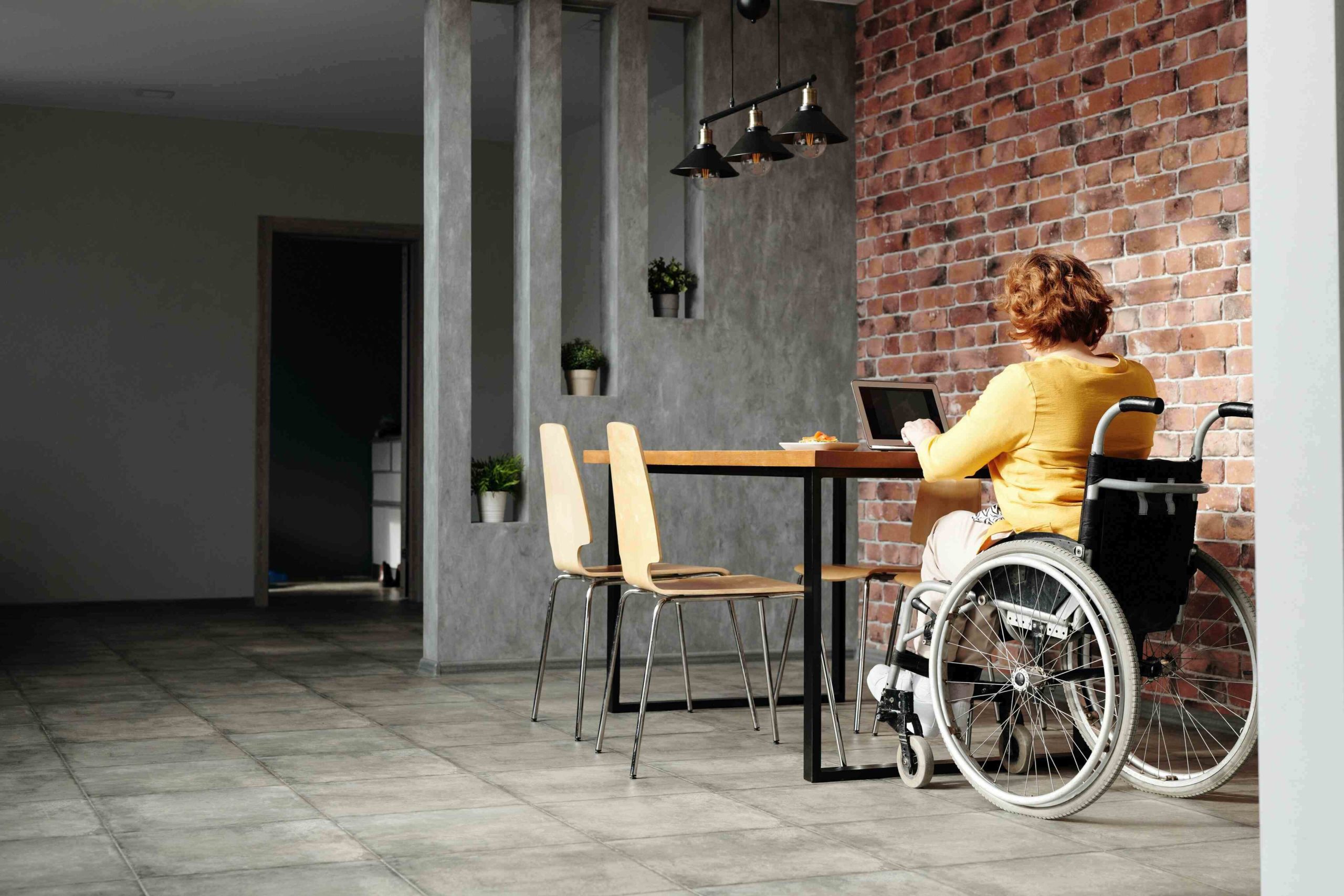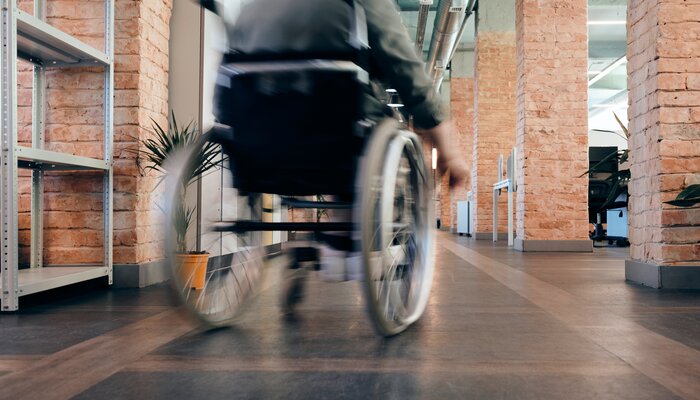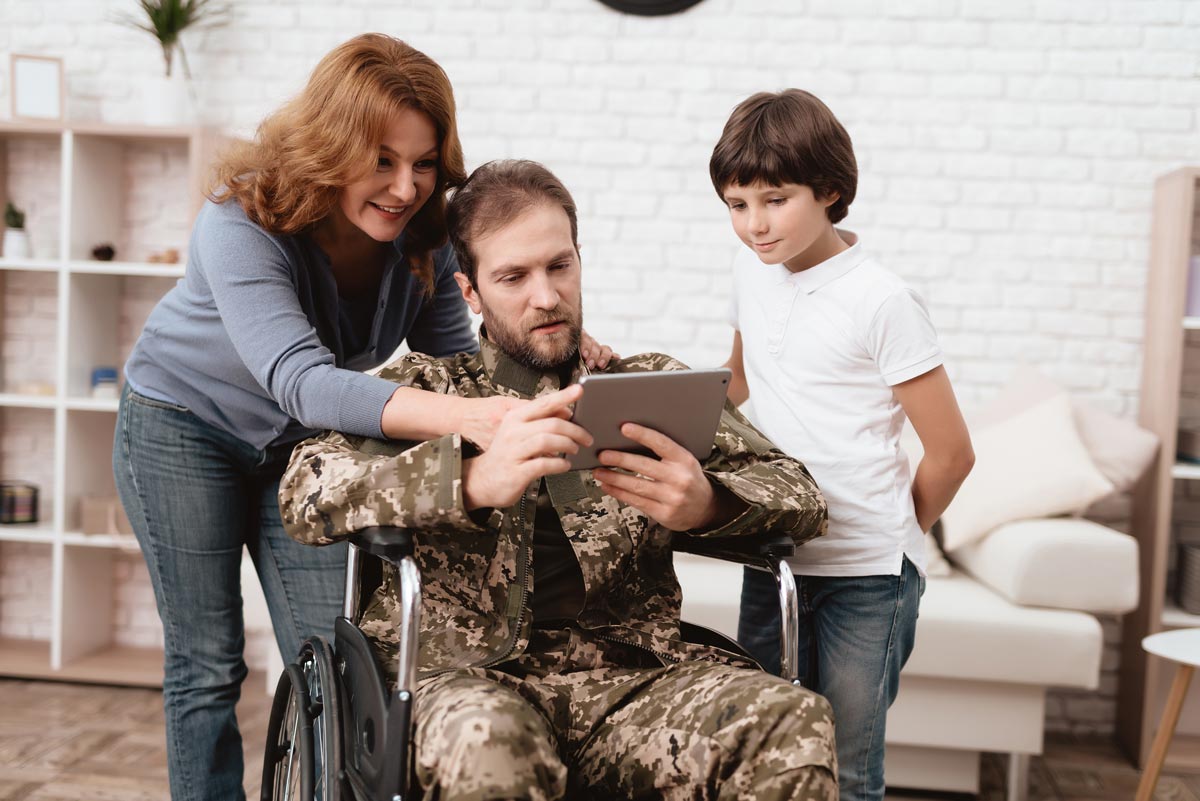TBI and Vision Loss
According to the VA's Office of Blind Rehabilitation Services, there are approximately 130,000 Veterans in the USA who are blind, and more than a million have a partial visual impairment that stops them from performing basic daily activities. The disability comes mainly from strokes, brain injuries, and difficulties in reading. VA confirms that 64% of the service members with traumatic brain injuries (TBls) also have a vision impairment.
Blind Rehabilitation Service (BRS)

The VA stands out as the sole healthcare system that provides comprehensive rehabilitation services and assistive technology to patients with vision loss. All patients receive personalized rehabilitation care and are prescribed assistive technology to enhance their quality of life. This integrated approach ensures that patients receive the best possible care and support to live their lives to the fullest despite their vision loss.
Assistive technology plays a crucial role in enhancing the lives of veterans who experience difficulties due to physical, cognitive, or communication impairments. These technologies come in different forms, such as communication devices, mobility aids, and computer software, to name a few. They can be tailored to the unique needs of each veteran, providing them with greater independence and accessibility. With assistive technology, veterans can perform daily tasks with ease, communicate more effectively, and engage in recreational activities that were once challenging.
Read on as we explore the most advanced assistive technologies on the market today.
Support for Low Vision Veterans
Individuals with partial visual impairment, commonly called low vision, face difficulty performing daily activities. However, assistive technologies tailored to their specific needs can significantly benefit low-vision veterans. The following technologies we will speak about are very relevant for such individuals.
Bridging the Visual Divide for Veterans
Navigating the world with low vision is like exploring a landscape obscured by mist. For our esteemed veterans grappling with partial visual impairment or blindness, daily challenges might range from distinguishing prescription labels to reading whole books. This assistive technology is a guiding light, showing the way toward accessibility and independence. InclusiveDocs is an assistive technology that seeks to bridge the gap for low-vision veterans. Picture it as a helping utility for providing digital documents that are accessible, ensuring a more inclusive online experience for everyone.
Features and Benefits
InclusiveDocs utilizes cutting-edge AI, NLP, and other technology-based document remediation processes that can extract data from unstructured files such as PDF and EPUB. The primary objective has always been to provide an accessible reading experience for all.
Continuous Progress of Iterative Improvements
InclusiveDocs is a software that provides quick and accurate solutions. Although the initial document remediation may not be perfect, subsequent ones will improve as the AI learns from more data. The remediation process always involves a combination of manual and automated intervention, where there is a great improvement with each future cycle. InclusiveDocs has nothing but rapid remediation with fast preciseness and quality.
How Veterans Can Use Assistive Technology
Large Prints and Audio Books
Accessible literature in large print or audiobook formats provides low-vision veterans alternative ways to enjoy reading and stay informed. The biggest benefits will be supporting recreational reading, learning, and staying connected to information, reducing the impact of vision loss on educational and leisure activities. InclusiveDocs has an advanced book reader that can adjust the content to fit any screen, providing the best reading experience for disabled veterans. The content, whether about the book or some other format, can be effortlessly displayed using the enhancement tools by adjusting the text font, color, brightness, background, and tons.
The TTS software includes a feature to convert digital books into audiobooks with ease. The setup is user-friendly and customizable, catering to a broad audience.
Customizable Digital Interfaces
Computer software and devices with customizable interfaces, including adjustable font sizes, color schemes, and screen magnification, empower low-vision veterans to tailor their digital experiences.
Benefits: Enhances accessibility to digital content, facilitates online communication, and promotes participation in various digital activities.
Screen Reader
Screen readers are innovative software programs that can convert digital text into speech, making them a crucial tool for visually impaired Veterans, who rely on them to access information on various digital devices such as computers and smartphones. These amazing programs have the capability to remediate all types of digital content, including HTML files, gifs, and video formats, enabling independent access to digital content and facilitating communication. Consequently, the use of screen readers can significantly enhance employment opportunities for those with visual impairments.
Voice-Activated Assistants
InclusiveDocs can serve as a cutting-edge voice-activated assistant that empowers users to access important information and perform various tasks using voice commands. This advanced technology is particularly beneficial for individuals with mobility or vision impairments, who face numerous challenges while trying to access and manage essential documents. With InclusiveDocs, users can conveniently and efficiently manage their daily tasks, including digital signatures and documents from government institutions, without any external assistance. This intuitive and inclusive technology is designed to make life more accessible and convenient for all users, regardless of their abilities. InclusiveDocs is truly a revolutionary tool transforming how we interact with technology.
Adaptive AI-Driven Computer Software
The assistive technology specializing in document remediation is specialized software such as screen magnifiers, screen readers, and voice recognition programs, which can adapt computer or different device interfaces to the specific needs of users with vision loss or blindness. Fortunately, with the emergence of AI in software platforms such as InclusiveDocs, veterans and everyone in need can find all the features in one place. Adaptive computer software facilitates computer use and helps in document creation, online navigation, education, and most of our daily routines.
How to Help Veterans Cope With Disability

There are large numbers of veterans with physical and mental disabilities. Most of them suffer from certain trauma and psychological disorders such as anxiety and depression accompanied by visual impairment or low vision. The first step in helping disabled veterans is supporting them and understanding what they are going through.
The next step is to offer them help from some of the programs for employability, such as the U.S. Employment Opportunity Commission, where the employment rights for each individual with disabilities are mentioned. You can also find more information and tips for veterans with disabilities returning to work.
Disabled veterans with physical disabilities such as vision impairment can get help using adequate assistive technology. By giving disabled veterans the ability to perform everyday tasks, assistive technology can help them feel more connected to their communities and improve their overall quality of life.
Final Words
Assistive technology is proving to be a game-changer in supporting disabled veterans, especially those dealing with traumatic brain injuries (TBIs) and vision loss. The VA's Blind Rehabilitation Service (BRS) offers personalized rehabilitation.
However, one remarkable tool is the assistive technology called InclusiveDocs, which uses AI and NLP to make digital documents accessible for low-vision veterans. With its quick remediation, precision, and continuous improvements, InclusiveDocs promises an inclusive reading experience. A range of assistive technologies, such as large prints, audiobooks, customizable interfaces, screen readers like InclusiveDocs, empower veterans. These technologies enhance their digital interaction and daily tasks.





